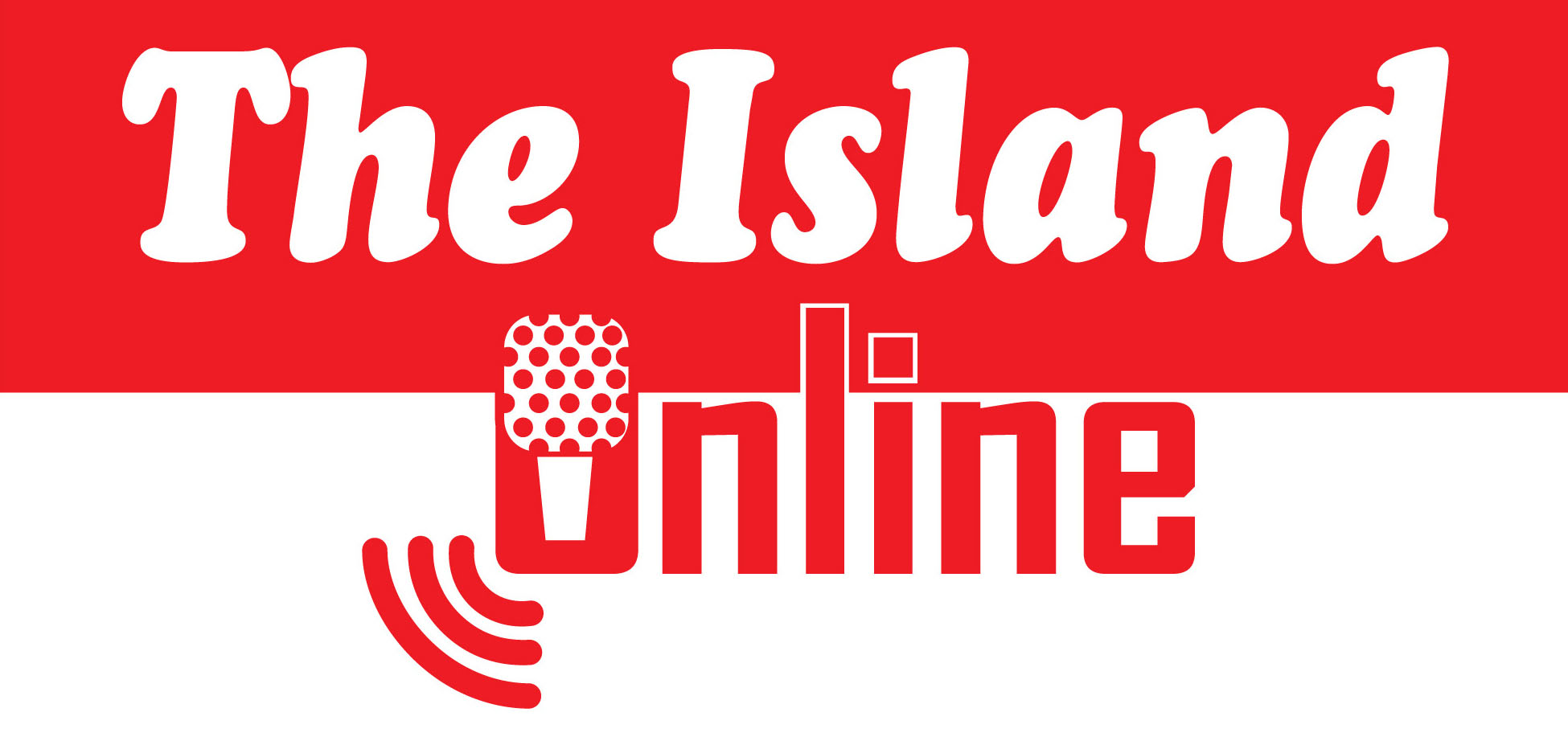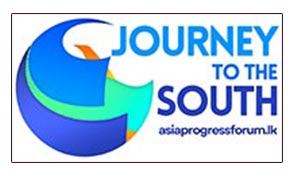Features
Sri Lanka’s Foreign Policy amid Geopolitical Transformations: 1990-2024 – Part I
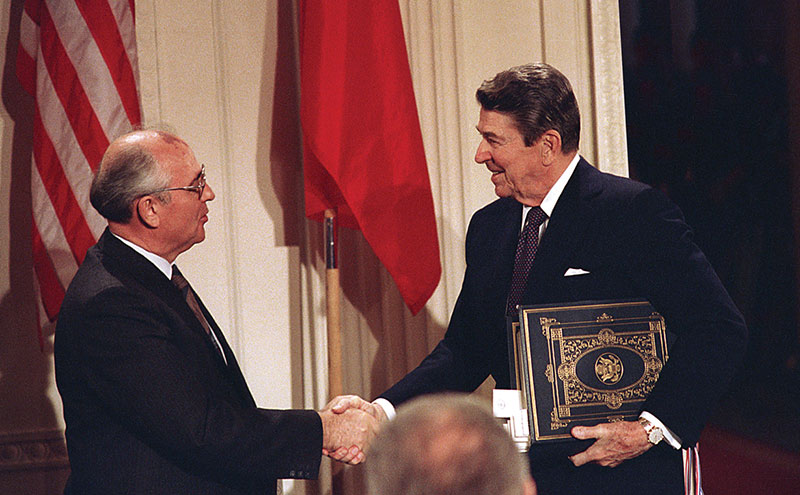
Sri Lanka’s survival and independence have historically depended on accurately identifying foreign policy priorities, selecting viable strategies as a small island state, and advancing them with prudence. This requires an objective assessment of the shifting geopolitical landscape through a distinctly Sri Lankan strategic lens. Consequently, foreign policy has been central to Sri Lanka’s statecraft, warranted by its pivotal location in the Indian Ocean—adjacent to South Asia yet separated by a narrow stretch of water.
Amid pivotal geopolitical transformations in motion across South Asia, in the Indian Ocean, and beyond, the formulation and implementation of Sri Lanka’s foreign policy has never been more critical to its national security. Despite the pressing need for a cohesive policy framework, Sri Lanka’s foreign policy, over the past few decades, has struggled to effectively respond to the challenges posed by shifting geopolitical dynamics. This article examines the evolution of Sri Lanka’s foreign policy and its inconsistencies amid shifting geopolitical dynamics since the end of the Cold War.
First
, the article examines geopolitical shifts in three key spaces—South Asia, the Indian Ocean, and the global arena—since the end of the Cold War, from Sri Lanka’s strategic perspective. Building on this, second, it analyses Sri Lanka’s foreign policy responses, emphasising its role as a key instrument of statecraft. Third, it explores the link between Sri Lanka’s foreign policy dilemmas during this period and the ongoing crisis of the post-colonial state. Finally, the article concludes that while geopolitical constraints persist, Sri Lanka’s ability to adopt a more proactive foreign policy depends on internal political and economic reforms that strengthen democracy and inclusivity.
Shifting South Asian Strategic Dynamics
Geopolitical concerns in South Asia—Sri Lanka’s immediate sphere—take precedence, as the country is inherently tied to the Indo-centric South Asian socio-cultural milieu. Sri Lanka’s foreign policy has long faced challenges in navigating its relationship with India, conditioned by a perceived disparity in power capabilities between the two countries. This dynamic has made the ‘India factor’ a persistent consideration in Sri Lanka’s strategic thinking. As Ivor Jennings observed in 1951, ‘India thus appears as a friendly but potentially dangerous neighbour, to whom one must be polite but a little distant’ (Jennings, 1951, 113).The importance of managing the ‘India Factor’ in Sri Lankan foreign policy has grown further with India’s advancements in military strength, economic development, and the knowledge industry, positioning it as a rising global great power on Sri Lanka’s doorstep.
India’s Strategic Rise
Over the past three decades, South Asia’s geopolitical landscape has undergone a profound transformation, driven by India’s strategic rise as a global great power. Barry Buzan (2002:2) foresees this shift within the South Asian regional system as a transition from asymmetric bipolarity to India-centric unipolarity. India’s continuous military advancements have elevated it to the fourth position in the Global Firepower (GFP) index, highlighting its formidable conventional war-making capabilities across land, sea, and air (Global Firepower, 2024). It currently lays claims to being the world’s third-largest military, the fourth-largest Air Force, and the fifth-largest Navy.
India consistently ranks among the fastest-growing major economies, often surpassing the global average. According to Forbes India, India is projected to be the world’s fifth-largest economy in 2025, with a real GDP growth rate of 6.5% (Forbes, January 10, 2025). India’s strategic ascendance is increasingly driven by its advancements in the knowledge industry. The country is actively embracing the Fourth Industrial Revolution (4IR) and emerging as the Digital Public Infrastructure (DPI) hub of South Asia. However, India’s rise has a paradoxical impact on its neighbours. On one hand, it offers them an opportunity to integrate into a rapidly expanding economic engine. On the other, it heightens concerns over India’s dominance, leaving them feeling increasingly overshadowed by the regional giant.
Despite significant geo-strategic transformations, the longstanding antagonism and strategic rivalry between India and Pakistan have persisted into the new millennium, continuing to shape South Asia’s security landscape. Born in 1947 amid mutual hostility, the two countries remained locked in a multi-dimensional conflict encompassing territorial disputes, power equilibrium, threat perceptions, accusations of interference in each other’s domestic affairs, and divergent foreign policy approaches. The acquisition of nuclear weapons by both countries in 1998 added a new dimension to their rivalry.
The SAARC process has been a notable casualty of the enduring Indo-Pakistani rivalry. Since India’s boycott of the Islamabad Summit in response to the 2016 Uri attack in Kashmir, the SAARC process has remained in limbo. Countries like Sri Lanka, which seek to maintain equally amicable relations with both India and Pakistan, often find themselves in awkward positions due to the ongoing rivalry between them. One of the key challenges for Sri Lanka’s foreign policy is maintaining strong relations with Pakistan while ensuring its ties with India remain unaffected. India now actively promotes regional cooperation bodies in South Asia, excluding Pakistan, favouring broader frameworks such as BIMSTEC. While Sri Lanka can benefit greatly from engaging with these regional initiatives, it must carefully navigate its involvement to avoid inadvertently aligning with India’s efforts to contain Pakistan. Maintaining this balance will require sharp diplomatic acumen.
India’s expansive naval strategy, especially its development of onshore naval infrastructure, has positioned Sri Lanka within its maritime sphere of influence. As part of the Maritime Infrastructure Perspective Plan (MIPP) launched in 2015 to enhance operational readiness and surveillance capabilities, India is developing an alternative nuclear submarine base for the Eastern Command under Project Varsha (Deccan Chronicle, 22.11.2016). This base is located in Rambilli village, 50 km southwest of Visakhapatnam and 1,200 km from Colombo (Chang, 2024). Additionally, INS Dega, the naval air base at Visakhapatnam, is being expanded to accommodate Vikrant’s MiG-29K and Tejas fighter aircraft.
Another key strategic development in India’s ascent that warrants serious attention in Sri Lanka’s foreign policy formulation is India’s progress in missile delivery systems (ICBMs and SLBMs) and nuclear-powered submarines. In 1998, India made it clear that its future nuclear deterrence would be based on a nuclear triad consisting of land-based Intercontinental Ballistic Missiles (ICBMs), submarine-launched ballistic missiles (SLBMs), and strategic bombers (Rehman, 2015). Since then, India has steadily advanced in this direction. The expansion of India’s missile delivery systems, including ICBMs and SLBMs, serves as a reminder that Sri Lanka exists under the strategic shadow of a major global power.
The development of India’s nuclear-powered ballistic missile submarines (SSBNs) accelerated after 2016. The first in this class, INS Arihant (S2), was commissioned in August 2016, followed by the launch of INS Arighat in November 2021. Designed for strategic deterrence, INS Arighat is equipped to carry the Sagarika K-4 submarine-launched ballistic missiles (SLBMs), with a range of 3,500 kilometers, as well as the K-5, a long-range SLBM capable of reaching 5,000 kilometers. The submarine is based at INS Varsha (Deb, 2021).
India has significantly advanced its missile delivery systems, improving both their range and precision. In 2021, it successfully tested the Agni-5, a nuclear-capable intercontinental ballistic missile with a range of 5,000 kilometers. On March 11, 2024, India joined the ranks of global powers possessing Multiple Independently Targetable Re-entry Vehicle (MIRV) technology (The Hindu, January 4, 2022). These advancements elevate the Bay of Bengal as a pivotal arena in the naval competition between India and China, carrying profound political and strategic implications for Sri Lanka, which seeks to maintain equally friendly relations with both countries.
Further, India’s remarkable strides in space research have cemented its status as a global power. A defining moment in this journey was the historic lunar landing on 23 August 2023, when Chandrayaan-3 successfully deployed two robotic marvels: the Vikram lander and its companion rover, Pragyan. They made a graceful touchdown in the Moon’s southern polar region, making India the fourth nation to achieve a successful lunar landing. This milestone has further reinforced India’s position as an emerging great power, enhancing its credentials to assert itself more confidently in South Asian, Indian Ocean, and global power dynamics.
India envisions a stable and secure South Asia as essential to its emergence as a great power in the Indian Ocean and global strategic arenas. However, it does not consider Pakistan to be a part of this stability that it seeks. Accordingly, when India launched the ‘Neighbourhood First Policy’ in 2008 to strengthen regional ties, Pakistan was excluded. India’s ‘Neighbourhood First Policy’ gained renewed momentum after 2015 under Prime Minister Narendra Modi. His approach to South Asia is embedded in a broader narrative emphasising the deep-rooted cultural, economic, and social exchanges between India and other South Asian countries over centuries. India’s promotion of heritage tourism, particularly the ‘Ramayana Trail’ in Sri Lanka, should be viewed through this strategic lens as part of its broader strategic narrative.
Evolving Indian Ocean Geo-political Dynamics
The Indian Ocean constitutes the next geopolitical frame for Sri Lanka’s foreign policy. The Indian Ocean is a huge bay bordered by the Afro-Asian landmass and Australia on three sides and the South Asian peninsula extends into the Indian Ocean basin centrally. Situated at the southern tip of South Asia, Sri Lanka extends strategically into the heart of the Indian Ocean, shaping its geopolitical significance and strategic imperatives for maintaining sovereignty. Historically, Sri Lanka has often been caught in the power struggles of extra-regional actors in the Indian Ocean, repeatedly at the expense of its independence.
Sri Lanka’s leadership at the time of independence was acutely aware of the strategic significance of the Indian Ocean for the nation’s survival. The first Prime Minister D.S. Senanayake, who was also the Minister of Defence and External Affair, stated in Parliament that: “We are in a dangerous position, because we are on one of the strategic highways of the world. The country that captures Ceylon would dominate the Indian Ocean. Nor is it only a question of protecting ourselves against invasion and air attack. If we have no imports for three months, we would starve, and we have therefore to protect our sea and air communications” (Hansard’s Parliamentary Debates, House of Representative. Vol. I, 1 December 1947, c. 444)
As naval competition between superpowers during the Cold War extended to the Indian Ocean, following the British naval withdrawal in the late 1960s, Sri Lanka, under Prime Minister Sirimavo Bandaranaike, played a key diplomatic role in keeping the region free from extra-regional naval rivalry by mobilising the countries that were members of the Non-Aligned Movement (NAM). In 1971, Sri Lanka sponsored a proposal at the UN General Assembly to establish the Indian Ocean as a Peace Zone (IOPZ). While the initiative initially gained traction, it stalled at the committee stage and ultimately lost momentum.
The maritime security architecture of the Indian Ocean entered a new phase after the end of the Cold War. The United States became the single superpower in the Indian Ocean with an ocean-wide naval presence bolstered by the fully fledged Diego Garcia base. Correspondingly, the regional strategic linkages that evolved in the context of the Cold War were eventually dismantled, giving way to new strategic relationships. Additionally, three key developments with profound implications for Sri Lanka should be noted: India’s projection of political and naval power into the deeper Indian Ocean, China’s rapid economic and military rise in the region, and the entry of other extra-regional powers into Indian Ocean politics. Although Sri Lanka adopted a broader strategic perspective and a more proactive foreign policy in the 1970s, its approach to geopolitical developments in the Indian Ocean in the post-Cold War era became increasingly shaped by domestic challenges—particularly countering the LTTE threat and addressing post-war exigencies.
India’s Expanding Naval Diplomatic Role in the Indian Ocean
Parallel to its strategic rise, India has intensified its engagement in the broader strategic landscape of the Indian Ocean with renewed vigor. This expansion extends beyond its traditional focus on the South Asian strategic theatre, reflecting a more assertive and multidimensional approach to regional security, economic connectivity, and maritime diplomacy. India’s active participation in multilateral security frameworks, infrastructure investments in critical maritime hubs and strategic alignments with major global powers signify its role in the changing naval security architecture of the Indian Ocean. India’s shifting strategic posture in the Indian Ocean is reflected in the 2015 strategy document Ensuring Secure Seas: Indian Maritime Security Strategy. It broadens the definition of India’s maritime neighbors beyond those sharing maritime boundaries to include all nations within the Indian Ocean region (Ensuring Secure Seas, p. 23).
In 2015, Indian Prime Minister Narendra Modi launched his signature Indian Ocean diplomacy initiative, Security and Growth for All in the Region (SAGAR) to foster trust and transparency, uphold international maritime norms, respect mutual interests, resolve disputes peacefully, and enhance maritime cooperation. Strategic engagement with the littoral states in the Indian Ocean region, especially Sri Lanka, the Maldives, Seychelles, and Mauritius and Madagascar has emerged as a key component of India’s Indian Ocean naval diplomacy.
The Seychelles archipelago, located approximately 600 miles east of the Diego Garcia base, holds particular significance in India’s maritime strategy. During Prime Minister Narendra Modi’s official visit to Seychelles in March 2015, India and Seychelles signed four agreements. A key strategic outcome of the visit was Seychelles’ agreement to lease Assumption Island, one of its 115 islands, to India—a move that reinforced Seychelles’ alignment with India’s broader naval diplomacy in the Indian Ocean
Similarly, Mauritius holds a central position in India’s naval diplomacy in the Indian Ocean. During Prime Minister Modi’s visit to Mauritius in March 2015, India signed a Memorandum of Understanding with Mauritius to establish a new base on North Agalega Island, a 12-kilometer-long and 1.5-kilometer-wide Island. The base is crucial for air and surface maritime patrols in the southwest Indian Ocean. It will also serve as an intelligence outpost. In September 2016, defense and security cooperation between India and Mauritius deepened alongside the signing of the ‘Comprehensive Economic Cooperation Partnership Agreement’ (CECPA).
India’s expanding strategic interests across the Indian Ocean are reflected in its growing economic, educational, and defense collaborations with Madagascar. In 2007, India established its first overseas listening post in northern Madagascar to monitor shipping activities and intercept marine communications in the Indian Ocean. This initiative provided India with a naval foothold near South Africa and key sea-lanes in the southwestern Indian Ocean. The significance of India’s defense ties with Madagascar is further highlighted by Madagascar’s participation in China’s Belt and Road Initiative (BRI). As a crucial hub along the Maritime Silk Road connecting Africa, Madagascar’s strategic importance is underscored in the broader geopolitical landscape.
Another element of India’s expanding naval diplomacy in the Indian Ocean is its participation in both unilateral and multilateral anti-piracy operations. India’s commitment to regional security was reinforced in 2008 when it established a ‘Strategic Partnership’ with Oman, securing berthing and replenishment facilities for its navy, along with a strategically significant listening post in the Western Indian Ocean. India’s naval presence in the Arabian Gulf gains additional significance amid reports of a new Chinese naval base in Djibouti and recent submarine deployments. Successful anti-piracy missions in the western Indian Ocean underscore India’s growing influence in the region’s evolving naval security architecture.
India increasingly views its vast Diaspora as a soft power tool to bolster its status as an Indian Ocean power. In June 2014, it launched the Mausam project to reinforce its cultural ties across the region, showcasing its heritage, traditions, and contributions to global arts, literature, cinema, yoga, and cuisine. This initiative complements India’s expanding naval diplomacy and strategic presence in the Indian Ocean. Over the years, it has established listening facilities, airfields, and port infrastructure in key locations such as northern Madagascar, Agaléga Island (Mauritius), and Assumption Island (Seychelles). This has led India Today to ask: “Could this mark the emergence of an Indian ‘String of Flowers’ to counter China’s ‘String of Pearls’?” (The be continued)
by Gamini Keerawella
Features
What AI can do for Sri Lanka
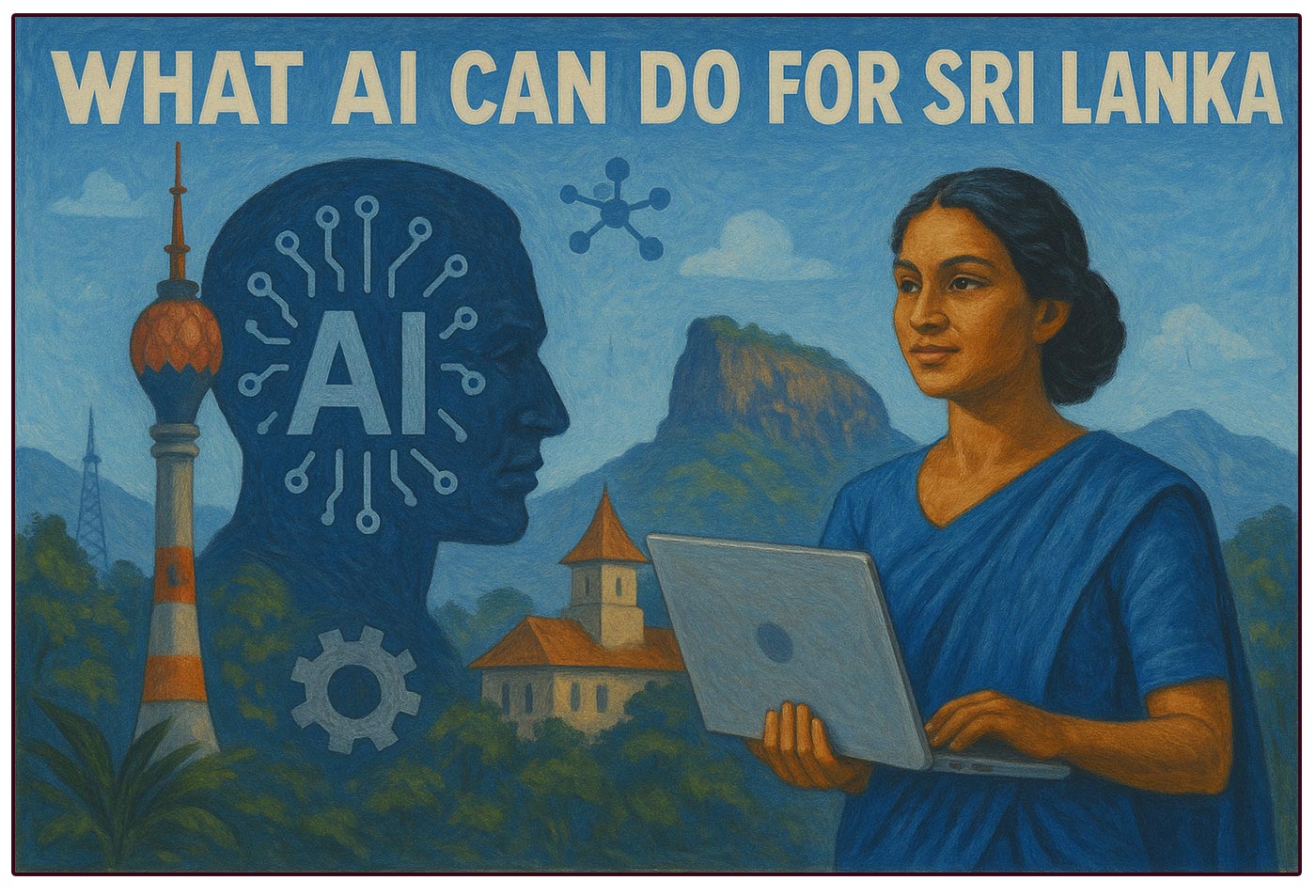
Artificial Intelligence (AI) has become a household buzzword of late thanks to advancements in a range of Large Language Models (LLMs) like ChatGPT and DeepSeek. However, AI was an academic and industrial pursuit for longer than that. Warren S. McCulloch and Walter Pitts wrote the first paper on artificial neural networks in 1943. The British mathematician Alan Turing created the most famous framework for artificial intelligence. Until recently, the main obstacle to achieving high-level artificial computation was hardware limitations. Data processing has advanced significantly with the gradual development of semiconductor computation power and the advancements in integrated circuits. Data aggregation accelerated with the development of the Cybernet. Since 2010, we have created more data than in all previous human history. This illustrates the extent of data generation. Therefore, modern-day AI advancement is not an accident; it is a direct result of development in industrial systems.
What AI Can and Can’t Do
There is an ongoing public debate about AI and its effect on human labour, relationships, and life in general. Some people have developed extremely negative views of AI due to its depiction in popular culture. However, these negative views are based on a lack of technical knowledge about AI. The human mind and artificial industrial computation cannot be compared. AI and human consciousness are different and will never replace or be compared to each other. As a biological creature, human computation is based on extremely complex external stimuli. However, AI relies on artificial computation that is based on knowledge acquired in a linear fashion from the data provided. This depends on the model’s computational capability and embedded design. Therefore, there is a wide gap between human and AI capabilities.
Misconceptions exist due to the inability to identify the historical development and dynamics of productive forces. In economics, there is a common understanding that production is a mix of land, labour, and capital. However, these were merely factors of production. To convert these factors into productive applications, they have to be synthesised into a value creation system. That value creation system is fundamentally an information system. A paddy farmer who owns land has acquired knowledge and skills via historically experience which enables them to plant, farm, and harvest paddy. It is the information or ‘knowledge’ that glues the production factors together and elevates them into a value-creating entity.
With advancements in the age of information, the availability of data has led to a higher level of information accumulation. High density of information accumulation leads to building a new industrial system driven by information. This can be run by semi-automated or fully automated agents. These industrial networks powered by a constant flow of information can be more easily made into fast-evolving industrial systems than the traditional industrial systems.
Many people misunderstand the concept of AI value creation. The value of AI is found in its application rather than in its programming. Most companies in the AI sector strive to attain this goal. Companies like OpenAI currently incur an annual loss of approximately 5 billion USD. Most AI companies operate on losses as they have yet to fully tap into the potentialities for application. Application will occur primarily in the industrial sector and the ability to build an application requires having a large industrial sector. This is the distinction between China and the US. The US has a relatively smaller industrial sector which is falling behind China (an Australian Strategic Policy Institute report states China is leading in 57 out of 64 critical technologies). When it comes to application, China could succeed more than the US in the long run simply because it has a larger industrial ecosystem.
 The impact of AI on industry will be significant and transformative. With smart manufacturing, production will be fully automated and integrated with supply chains. This will not only lower expenses but also enhance the agility of manufacturing. Already in China there is a new phenomenon called ‘Dark Factories’ – these are fully automated factories where the lights are switched off because unlike humans, machine do not need light to function. The pharmaceutical and medical sectors will also undergo significant changes due to the implementation of AI. Drug discovery already employs AI. Today, scientists are building machines capable of performing operations on the human body, as well as machine agents which collaborating with doctors. In the agricultural sector, there are smart systems where automated artificial agents perform planting, management, and harvesting.
The impact of AI on industry will be significant and transformative. With smart manufacturing, production will be fully automated and integrated with supply chains. This will not only lower expenses but also enhance the agility of manufacturing. Already in China there is a new phenomenon called ‘Dark Factories’ – these are fully automated factories where the lights are switched off because unlike humans, machine do not need light to function. The pharmaceutical and medical sectors will also undergo significant changes due to the implementation of AI. Drug discovery already employs AI. Today, scientists are building machines capable of performing operations on the human body, as well as machine agents which collaborating with doctors. In the agricultural sector, there are smart systems where automated artificial agents perform planting, management, and harvesting.
How Sri Lanka Can Benefit from AI
AI offers a new path forward not only for Sri Lanka but also for the Global South to leapfrog their economies from the existing industrial capabilities to more advanced capabilities. Sri Lanka’s industry and agriculture require serious industrialisation. The performance of the Sri Lankan economy is deficient compared to regional peers. Some of these deficiencies can be technically mitigated via AI, which could also provide many low-cost solutions. For example, Sri Lankan agriculture has several productivity lags compared to the rest of the world, these could be reduced by optimising our agricultural processes using AI. The same applies to our industrial sector, where the new wave of industrialisation with AI provides Sri Lanka with a fresh path.
AI also provides a wide range of new opportunities for the public sector to advance itself from the existing conditions. Already states have begun to apply AI in the public sector – for example, China has AI-based public utility optimisation and national-led model deployments through state-affiliated infrastructure (e.g., smart cities, public security). In an underdeveloped country like Sri Lanka, some commercial initiatives enter the public domain because of the short-sighted views of the private sector which is influenced by balance sheet constraints. Some commercial use cases have little market incentive; therefore, the private sector will not be interested in such initiatives. However, these initiatives could improve the overall economic conditions and bring more value to the economy in the long run. For example, the Sri Lankan government can run its data exchange model and trade data, which will provide data for firms to make better-informed business decisions, and it will enable them to build more nationally orientated business models, as the data has its own natural nuances. Language training and automated learning are two examples.
Education is another area in which Sri Lanka could greatly benefit from AI, as it can offer low-cost automated learning platforms that help develop much-needed skilled labour at a very low fiscal cost.
Bottlenecks to AI Development in SL
The primary condition to run any industry is energy. The cost of energy heavily weighs on industrial development and even attracting foreign investment. Sri Lankan electricity costs are higher than most of our regional peers. Building new capacity is crucial to meet the demand. Even the most advanced countries in the world now struggle to meet this demand. In such a context Sri Lanka falls far behind. Therefore, Sri Lanka should prioritise building new energy capacity that meets the requirements for digital industrial dynamics.
When it comes to digital transformation, Sri Lanka hasn’t really developed a road map that addresses its national conditions. Sri Lankan broadband development lags behind our South Asian regional peers, and the South Asian region is far behind the rest of Asia, especially countries like China and Singapore which have faster internet than some countries in the Global North. Therefore, the government should develop more advanced broadband infrastructure for Sri Lanka.
To build an orderly developed cyberspace requires several preconditions. Cyberspace, like any civil environment, requires a digital ID to validate the authenticity of individuals and firms. Therefore, the government should develop its own digital ID under its own national plan. The current plan for digital ID hasn’t considered Sri Lanka’s national industrial requirements and its concerns over security, privacy, and sovereignty.
South-South Cooperation
In the Global South, there is already a growing consensus to develop indigenous AI infrastructure and capabilities. China is in the forefront of AI technology and is willing to share its advancements with the rest of the world, especially the Global South. In October 2023 President Xi Jinping proposed the Global AI Governance Initiative (GAIGI) for equitable, safe, and inclusive AI governance, intended to ensure the benefits of AI are shared globally, particularly with developing nations. Sri Lanka is already part of the Belt and Road Initiative, which has the Digital Silk Road and an initiative for AI. BRICS countries, including our neighbour India, also have their own AI initiatives.
The current moment is an inflection point for Sri Lanka. AI could provide a new path for Sri Lanka to leapfrog its industrial capabilities and ignite a new wave of digital industrialisation. Sri Lanka should seize the opportunity or risk further slipping away from the competitive edge. Such a mistake would widen our gap not only with the Global North but also with our own peers in the Global South.
(Kasun Thilina Kariyawasam is a Sri Lankan economist based in Uppsala, Sweden. His research focuses on artificial intelligence, digitalisation, and fintech. He is a member of the Asia Progress Forum.)
Features
Stable government needed; Trump continues destabilisation
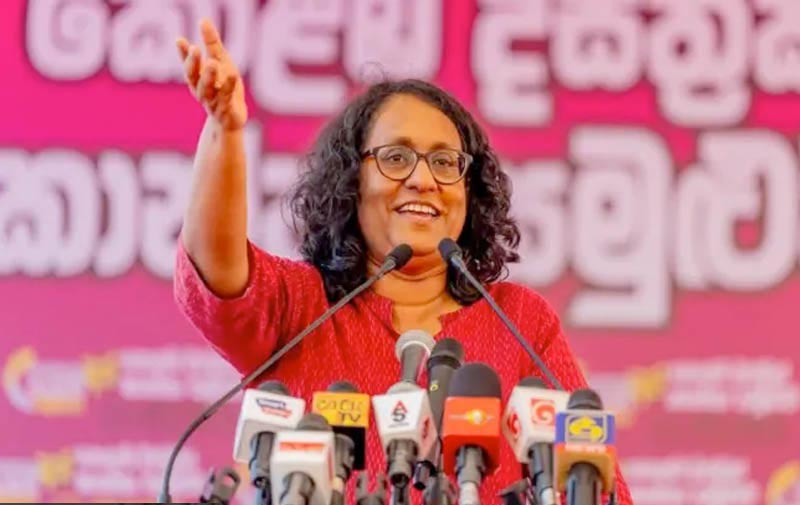
 Most Sri Lankans, or at least those Cassandra exchanges views with, are satisfied with the present government and particularly approve of President AKD and PM Dr Harini. Recently over the satellite sent to outer space during Prez Mahinda R’s time, dubbed ‘Chi Chi’s rocket’, since his third son was an aspiring astronaut, controversy arose with Minister Wasantha Samarasinghe, addressing Parliament saying that figures and info supplied by the PM were incorrect. Cass does not remember him saying that figures given to her by the BOI were incorrect or to be doubted. This was no doubt not quite done, a Cabinet Minister, directly or indirectly, faulting the Prime Minster.
Most Sri Lankans, or at least those Cassandra exchanges views with, are satisfied with the present government and particularly approve of President AKD and PM Dr Harini. Recently over the satellite sent to outer space during Prez Mahinda R’s time, dubbed ‘Chi Chi’s rocket’, since his third son was an aspiring astronaut, controversy arose with Minister Wasantha Samarasinghe, addressing Parliament saying that figures and info supplied by the PM were incorrect. Cass does not remember him saying that figures given to her by the BOI were incorrect or to be doubted. This was no doubt not quite done, a Cabinet Minister, directly or indirectly, faulting the Prime Minster.
Since it is a delicate subject and we journos need to tread carefully, I quote Dr Nalinda Jayatissa who stepped in to douse the controversy in an on-line article in a Daily Mirror: “…The issue resurfaced after the PM, responding to a question from MP D V Chanaka, disclosed the income generated from the SupremeSat satellite, following conflicting statements in Parliament over its status and earnings”. SupremeSat later issued statements reaffirming that its satellite remains in orbit at 87.5 degrees East and clarifying that no government funds were used in the venture. Commenting on the matter, Minister Jayatissa asked, ‘Do you think that if a satellite generated such high income, the Rajapaksas would have stayed silent for the last 13 years? Do you think they would do something benefitting the country without also benefitting themselves?’
“He added that ongoing investigations would reveal the truth, cautioning that the project should not be examined in isolation but be considered alongside other activities linked to the Rajapaksas.”
Cassandra, whose name was borrowed by yours truly for these Friday Cries, was a Trojan captive of strongman Agamemnon and brought to his kingdom in Mycenea. She could foretell the future and her cry of “I see blood” came true when her patron was murdered. The Cassandra, who writes this is no soothsayer, but she has been rather wary of Wasantha Samarasinghe, considered by her to be rather radical and wanting action. So she shivered as the Parliamentary sessions proceeded wondering whether this young Minister was aiming at a break in the NPP ranks, either fishing alone or under suggestion or orders. The NPP is the government we people want with a strong JVP but not solely them.
That said let’s move on. In Wednesday August 13 TV1 news, Minister Dr Jayatissa affirm there was no talk at all of replacing Dr Harini Amarasuriya as PM with Bimal Ratnayake, answering a question by a journo. We the people, definitely need Dr Harini as our Prime Minister and Minister of Education, who is set to usher in much needed changes and improvement in the education system.
World news
Heartening to know the number of countries ready to recognise Palestine as a separate state (read Gaza) is increasing. Australia has joined Britain and France in this bold, completely justified move of checkmating Netanyahu in his diabolical move of completely annexing Gaza and making it a playground or whatever of it for Israel.
In the US, its ally Donald Trump has made another strong move which appears to be, by what is read, unnecessary by releasing the National Guard to wipe out crime after ordering all homeless in Washington DC to vacate forthwith. ‘To where’ was the first question asked by any reader. ‘How’ the next question. Already minus any wherewithal how and where are they to move? The government or the State of Washington must help them by first giving housing and then the means to rehabilitate themselves.
“On Monday 11 August, Mr. Trump and his newly confirmed federal prosecutor for Washington, cited an array of inaccurate statistics about murders in the city and crimes committed by children. It was part of a broader bid by his administration to rail against crime in urban, largely liberal cities, often turning to exaggerated and inaccurate figures to portray soaring violence and lawlessness.” That is a quote from a NYT newspaper.
Cass says that Trump is known for his convenient-to-his-image lies – often blatant. In this instance he is also conveniently forgetting what happened in the Capitol on January 6, 2021, when he was known to have instigated his loyalists to invade the seat of US government in a bid to stop the declaration of Joe Biden as the legitimately elected President. I quote again: “President Trump has sought to rewrite history of the riot and called those arrested ‘hostages’.”
Much mentioned in news sessions such as BBC is the meeting between Trump and Putin in Alaska to decide on the war in Ukraine. The two and their teams meet this Friday. Where is Ukraine’s Prez Zelenskyy? It is like an omelette without eggs!
Features
Men of Stone: A Reflection on Richard Simon’s Thomia – II

(Continued from yesterday)
As stated before, the chapters describing the life of the school are interspersed with those describing its national context. The most pertinent aspect of that context is the country’s educational environment. The book starts with Governor Frederick North’s vain attempts to persuade the British Government in London to allocate a decent budget for education in the colony of Ceylon. It ends with the tensions experienced by schools like S. Thomas’ in the wake of the Christopher Kannangara cum Abeyratne Ratnayake reforms, described in the former’s own words as follows: “In spite of the most dogged opposition from a large and very influential section of the people of my land, in spite of abuse and calumny, vilification and ridicule, I have succeeded in obtaining the sanction of the State Council of Ceylon for a scheme of free education, providing for all children of the land equal opportunities to climb to the highest rung of the educational ladder … regardless of the status or financial capacity of their parents, and for obtaining for our national languages their rightful place in that scheme as an essential prerequisite for building a free and independent nation”.
Noble though the above sentiments are, and in spite of the undeniable democratisation of education bestowed by it, the overall impact of such free education has generated much controversy over the years, not least because the State Council, and succeeding legislative bodies, were unable to budget for the proposed ‘free of charge’ education. In addition, while the emphasis on the vernacular has granted employment opportunities to many who would otherwise not have had access to the same, it has probably resulted in an insular outlook without the global perspective that is available through an international language. As articulated by Warden De Saram in a prize day speech, “To the query … as to what was the use of knowing the height of Mount Everest when we did not know the height of our own mountains, we reply that knowing the height of our own mountains perfectly well, we regard it as of great importance to know that of Mt Everest – as otherwise we might think our own the highest in the world. Similarly, in the realm of intellect and of the spirit, there are eminences reached by the human intellect and the human spirit of which every cultured man should be aware. What do they know of Ceylon, who only Ceylon know?”
There are some interesting contrasts that I discovered in the book, the first between the founder of S. Thomas’ College and first Bishop of Colombo (Bishop James Chapman) and the then principal of Royal College, known at the time as the Colombo Academy (Rev Dr Barcroft Boake), largely on matters of church doctrine, given that the Bishop represented the ‘high church’ tradition of the church of England, and the principal the more evangelical ‘low church’ one – an insight into a type of Royal-Thomian rivalry quite distinct from that on their playing fields.
The most dominant contrast is that between the path taken by SWRD Bandaranaike and the one maintained by Reggie De Saram. Though nurtured in the elitism of his own family, boarded at S. Thomas’ in Warden Stone’s own residence (for a while) and ‘finished’ at Christ Church, Oxford, Bandaranaike espoused a populist agenda in his political life, in order to become Prime Minister. Such an agenda was almost everything De Saram stood against, as expressed in another of his prize day speeches: “This is said to be the age of the common man. It may be so. But it is certainly also the age of the demagogue, the man with the loud voice and fluent vocabulary and specious tongue who debases his gifts by devoting them to the misrepresentation of facts, the stirring up of hatred, the vilifying of persons and causes to which he is opposed; the man with much cleverness but little wisdom who is prepared to sacrifice the peace and prosperity of the country to the gaining of some petty personal or party triumph”. “Sunny Banda” as he was apparently referred to in his school days, is portrayed in the book as maintaining his links with his alma mater wherever possible, but being cognizant of his estrangement from it.
Before arriving at the most telling contrast in the book, the narrative describes how Thomian school-leavers found it increasingly difficult to make contributions to national life, as they had before. For example, S. Thomas’ had produced four of Ceylon’s first five prime ministers. Simon portrays D.S. Senanayake, the first prime minister, as a quintessential Thomian product, particularly with respect to his racial inclusivity in a fledgling state – although he and others have been strongly critiqued in some quarters for their betrayal of the rights of Indian Tamil plantation workers. Thomians had figured prominently in the administrative services as well. Particular mention is made of two Saravanamuttu brothers.
One of them, Manicasothy (M. Sara), became a journalist who ended up in Penang; and when the British fled in the face of the Japanese invasion, found himself the only person willing and able to take over the administration of the island, and eventually hand it over to the Japanese! The other, Paikiasothy (P. Sara) was made Controller of both Tea and Rubber in Ceylon, became the first president of the then Board of Control for Cricket, and had the Oval grounds in Colombo named after him. Herbert Hulugalle is presented as Ceylon’s foremost journalist, one who had significant influence in the politics of his day as well. Lionel Wendt’s contribution to the arts is covered in some detail too.
Compared to this influence in national life, Thomian influence in the Sri Lanka of the nineteen seventies had dwindled, partly because Sinhala had become the dominant language of the legislature and administration, and also because of the politicisation of that administration. Some space was left for Thomians in the business sector, and in the armed services, but the influence on national life from such sectors was probably limited. Reference is made to some contributions in science and technology too, but this sector itself needs greater national recognition.
It is in the above context that Ranjan Wijeratne is suggested by Simon as the last Old Thomian to have significantly influenced Lanka’s history. After stints in the tea trade and military, he became a State Minister of Defence, and was responsible for the suppression of both the second JVP uprising in the south and the LTTE one in the north. While held as a hero in some quarters and ultimately falling prey to an LTTE car bomb, he is seen in others as a cautionary example of alignment with the powers that be and the soft-pedalling of moral scruples; because as the Defence Minister he was engaged in some very questionable human rights violations in the process of rooting out ‘terrorism’.
Juxtaposed with the narrative on Wijeratne is that on Richard De Zoysa, “The Martyr” being the title allocated to the chapter on him. While the chapter describes De Zoysa’s contributions to English theatre both in and after school at a time when Thomian contribution to English drama was probably at its zenith, it also portrays his moves away from that relatively elite circle to broader Sinhala language dramatic pursuits, ones that were much closer to the revolutionary politics of his day. Simon says that Richard’s spectacles were subsequently found on a file containing a Sinhala manuscript in Rohana Wijeweera’s handwriting, titled “What to do about the LTTE”, that Richard had been translating into English. Was this De Zoysa’s way of finding relevance for a Thomian – i.e. the use of his English language skills to support a grassroots (and indeed radical) movement; as opposed to the Wijeratne way of using his leadership skills in the service of power, in spite of the moral compromises involved? This to me is the most poignant contrast in the book, one that all Thomians, young and old, should ponder upon, as they dwell on how to be relevant to their nation. There is no doubt where Simon’s sympathies lie – his book is dedicated to The Martyr – and many of us would doubtless identify with him.
This book is a labour of love, and I hope this reflection will encourage others to read the book, rather than being content merely with this article – book reviews sometimes have that effect, I’m afraid! I understand that the author tracked down sources, both documentary and personal, both in the U.K. and Sri Lanka, in the course of his meticulous and painstaking research. Much of his data however appears to be sourced from editions of the College Magazine, emphasizing the importance for schools to both maintain the quality of such publications and avoid missing issues or volumes. There may be more descriptions in the book of debating at S. Thomas’ than of cricket, doubtless reflecting the author’s predilections; but probably a welcome corrective.
The author’s knowledge is encyclopaedic – take for example a reference to the miasmic (as opposed to the germ) theory of disease, which saw the sea breezes of Mutwal as a ‘healthy environment’ for the school. There are many times I had to consult the internet (rather than a dictionary as I would have in the past) to find meanings of words – I have begun to use the word ‘mephitic’ in some of my conversations! There are two good indices (of subjects and persons) and some endnotes, but unfortunately all at the end of Volume II, which resulted in my not consulting them too much while reading Volume I. Some of the sentences are very long, leading me to suspect a grammatical error or two, until I looked closer and recalled the rules for parsing of sentences I learnt in middle school! I bless the author for writing this; and am proud that a Thomian has been able to generate a work such as this – which is itself a testament to continuing Thomian relevance for the nation. I commend it on the one hand to all Thomians and on the other to all serious students of history, especially the educational history of Lanka. The book is available at the Barefoot Shop and Vijitha Yapa; and from www.thomia.com.
(Priyan Dias, a Thomian schoolboy from 1965 to 1975, member of the S. Thomas’ College Board of Governors from 2002 to 2010, is an emeritus professor in civil engineering of the University of Moratuwa, professor at the Sri Lanka Institute of Information Technology, and past president of the National Academy of Sciences of Sri Lanka.)
by Priyan Dias
-

 Business4 days ago
Business4 days agoPrivate sector urged to play key role in shaping an inclusive, equitable and peaceful SL
-
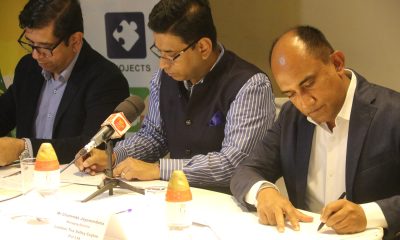
 Business5 days ago
Business5 days agoLumbini Tea Valley Ceylon signs strategic Regenagri Partnership with Solidaridad to drive climate-smart agriculture in Sri Lanka
-
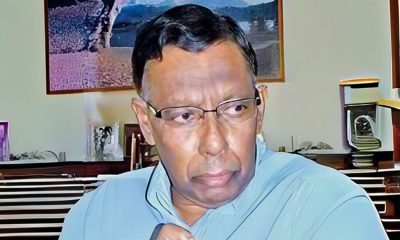
 Features6 days ago
Features6 days agoK H J Wijayadasa: A rare and exemplary public servant
-

 Business2 days ago
Business2 days agoBond market rejects Sri Lanka debt auction
-

 Features4 days ago
Features4 days agoWe must return to the Kadirgamar doctrine
-

 Editorial6 days ago
Editorial6 days agoOf that high-stakes trade showdown
-

 Sports3 days ago
Sports3 days agoMinagi Rupesinghe: Beating the odds
-

 Features5 days ago
Features5 days agoEducational reform: Capitalism,compassion, or both?


